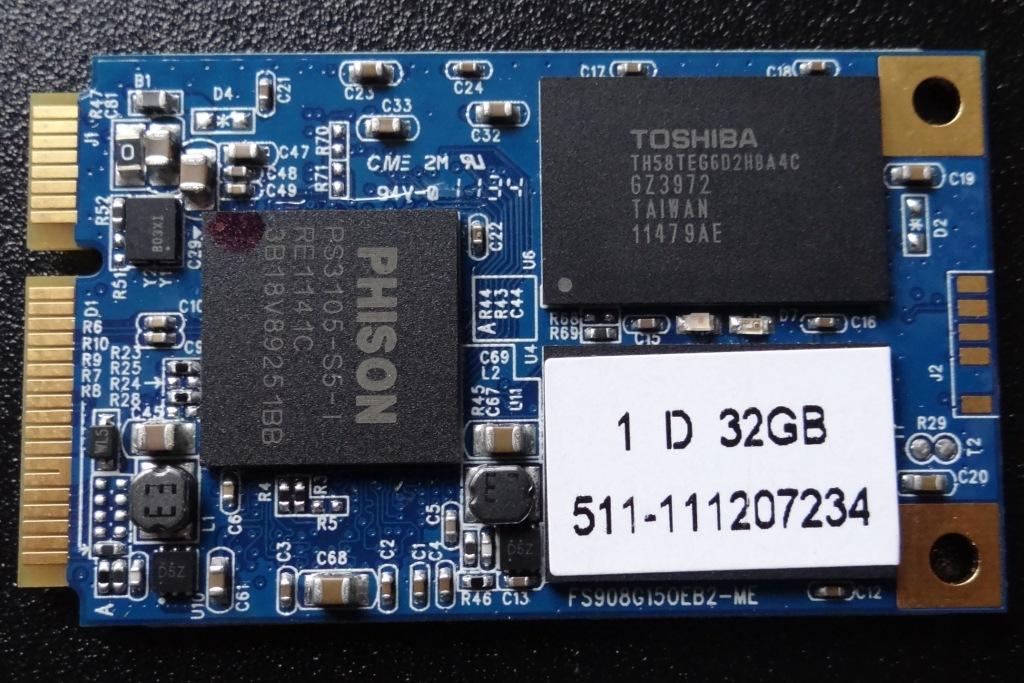In taking a close look at the need for mSATA SSDs in today’s SSD arena, it just doesn’t really seem clear as to why manufacturers are jumping into the mSATA fold so quickly. We might be able to say that the push to market of mSATA SSDs has become a trend, in fact.
Our analysis today will be the MyDigitalSSD Super Cache 32GB mSATA SSD, an SSD that is capable of fulfilling the disk caching role just as easily as if it were in use as a boot drive in systems capable of mSATA support.
INTRODUCTION
The very first thing that caught my eye with this SSD was it’s price. It is available at $59.99 which just may be the cheapest SSD upgrade you can buy for a computer system. The catch, of course, is that it’s support is limited to a few notebook brands to include Lenovo, Dell and HP, and also some Gigabyte motherboards which have an integrated mSATA interface specifically implemented for Intels Rapid Storage Technology. Fear not though as the future looks bright with the new Ultrabook craze.
If you are familiar with our site, you are well aware that we put seven mSATA SSDs to the test in our NVELO Dataplex SSD Caching Software Review as well as having tested the Samsung Series 9 with the Samsung PM800 followed by the newly released Samsung SATA 3 PM830. Most recently, we covered what we felt to be a consumer concern with the ASUS Zenbook and took a close look at the ADATA and Sandisk mSATA SSDs within that ultrabook. In a nutshell, we have just about every mSATA SSD available today sitting around our office in one place or another.
SPECIFICATIONS AND COMPONENTS
The MyDigitalSSD Super Cache SSD is only available in a 32GB configuration and specifications list it’s performance at 270MB/s read and 110MB/s write. It is one of the first to utilize Toshiba toggle mode NAND flash memory, weighs less than 6 grams fully dressed, and has several features to include sudden power off data recovery.
 This SSD is powered by a Phison controller and contains four chips of Toshiba toggle mode NAND flash memory, two of which are located on each side of the mSATA PCB along with a Nanya DRAM cache buffer on the bottom of the drive.
This SSD is powered by a Phison controller and contains four chips of Toshiba toggle mode NAND flash memory, two of which are located on each side of the mSATA PCB along with a Nanya DRAM cache buffer on the bottom of the drive.
 For testing today, we will be utilizing the Renice mSATA to SATA interface adapter, that we had on hand, which simply plugs into our test system power and data cables.
For testing today, we will be utilizing the Renice mSATA to SATA interface adapter, that we had on hand, which simply plugs into our test system power and data cables.
 The SSD Review The Worlds Dedicated SSD Education and Review Resource |
The SSD Review The Worlds Dedicated SSD Education and Review Resource | 
how do you explain that write transfer rate through the cache is better than direct access to HDD? since anyhow the data has to be written to HDD, the performance is based on the Weakest point, i.e the HDD tyhroughput? (may be i write here spupidities but since I am not an expert, I take the chance…
Whether people care to believe so or not, much synthetic testing actually mimics reality. In the case of the HDD vs the cached HDD, it is particularly so. First and foremost, the cached HDD starts and shuts down considerably faster than the regular HDD. This is because the large cache retains frequently used information for access quickly, much as a carpenter secures his tools in a locked room or a new home rather than out in his truck. The tools are quicker to retrieve and, therefore, the work gets done quicker. The cached HDD is much the same and the beauty of this system is that, even in typical use, the cached HDD is visibly quicker in all applications than the regualr HDD. Hope this helps.
Gna buy the lenovo thinkpad twist!
Plan to use iTunes quite frequently due to my iOS devices
It has a 7200rpm 500gb hdd+24gb mSATA
Will it load fast?
Yes it will load faster than a hard drive but the end result is probably that of a cached hard drive if they are configuring as such.
I have a Lenovo y580 without any ssd and its motherboard does not support SRT. It only has an empty msata slot and i am planning to buy a small ssd(32gb or 64gb) for caching. Does the mydigital super cache already have a caching software in its firmware or do we have to install a third party software. Also which cashing software (available to the consumer) would you recommend?